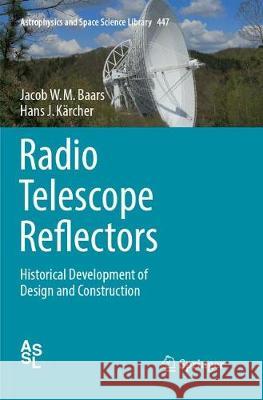Radio Telescope Reflectors: Historical Development of Design and Construction » książka
topmenu
Radio Telescope Reflectors: Historical Development of Design and Construction
ISBN-13: 9783319879581 / Angielski / Miękka / 2018 / 275 str.
Kategorie BISAC:
Wydawca:
Springer
Seria wydawnicza:
Język:
Angielski
ISBN-13:
9783319879581
Rok wydania:
2018
Wydanie:
Softcover Repri
Ilość stron:
275
Oprawa:
Miękka
Wolumenów:
01











